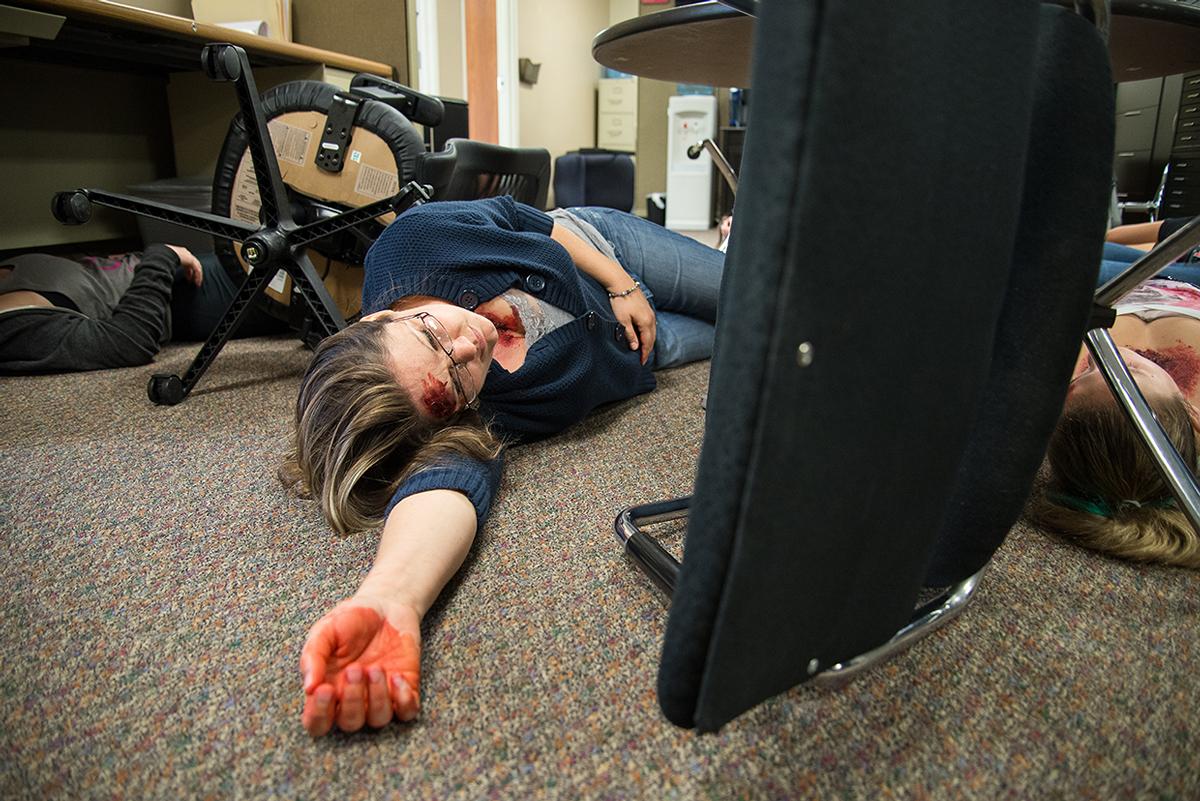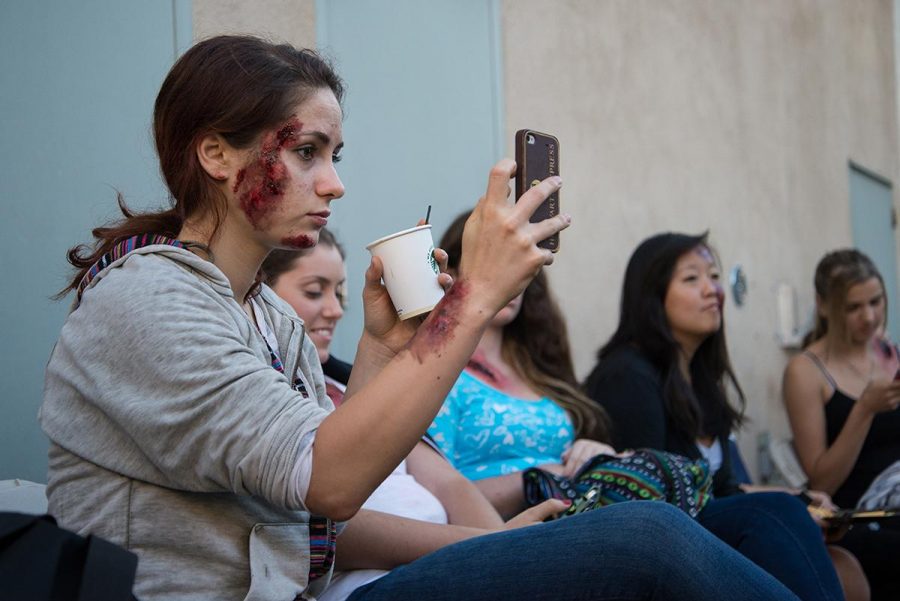
The city of La Mirada partnered with Biola in the drill as part of a statewide program, the Great ShakeOut on Oct. 16 to promote disaster preparedness. This full scale simulation, held in the facilities management yard, portrayed a 6.7 magnitude earthquake that hypothetically took place on the Whittier Fault Zone — the same origin of the La Habra 5.1 magnitude earthquake that occurred in March.
A 6,500 pound Big Shaker, a machine that simulates the shakings produced by a real earthquake, created a mass casualty earthquake drill hosted on Biola’s campus.
Sixty paid student volunteers played victims pretending to have suffered serious injuries or fatalities. The Biola Health Center and nursing students also played a role by responding to the simulated injuries.
The State Office of Emergency Management selected Biola as the organization to focus on for this year’s drill in order to prepare the public for possible future earthquakes with the necessary safety precautions and response. While the City of La Mirada partnered with Biola in 2010 to create a full-scale earthquake simulation, this marks the first year OEM focused on a university campus, said Andrew Vialpando, administrative analyst for public safety and community services.
CAMPUS AND CITY INVOLVEMENT
In response to the simulated earthquake, Campus Safety was the first to take action, followed by assistance from the City of La Mirada, including the Los Angeles Fire Department and Community Emergency Response Teams.
John Ojeisekhoba, campus safety chief, had several goals for the drill, including seeking out possible problems in procedure and trouble-shooting such problems.
“In all, we want to be able to access our capability internally and how cohesive we are. We want to be able to access our strengths, want to be able to access our weaknesses and what threatens to manage this magnitude of an earthquake. And in the end, seek ways to improve,” said Ojeisekhoba.
Following the drill, Ojeisekhoba was able to identify one weakness in capability of emergency response.
“A weak link is if you have a major earthquake, the people stuck in the building, we won’t have the capability to help them. We don’t have the training. So, that’s a fire department function,” said Ojeisekhoba.
Other than the one identifiable problem, the drill went smoothly and as planned, said Ojeisekhoba.
“It went well. It went as expected. As far as communication and partnership, it flowed well,” said Ojeisekhoba.
Another targeted outcome of the drill includes improving communication with the City of La Mirada in handling possible emergency responses through quick responses and a depth of understanding of the resources the city has to offer Biola in the occurrence of such a disaster.
“The partnership with Biola has really grown through these exercises. At Biola, a lot of the students are from out of the state or areas where they don’t really experience many earthquakes so it’s a good way to remind everyone to stay ready and to know that the community’s ready if you guys need us,” Vialpando said.

PRESS CONFERENCE OPENS THE EVENT
A press conference was held preceding the event where Biola faculty and staff, the City of La Mirada members and other external organizations made statements on the drill and the importance of earthquake preparedness.
President Barry Corey addressed the necessity of Biola’s partnership with the city and external organizations in responding to future emergencies.
“We want to be one of many of you that cares deeply about preparing our students, our communities, for earthquakes should they happen. We need to earn the trust of this community and we know we could not do it without the partnerships we have here today,” Corey said in his address.
Several of the speakers emphasized the threat earthquakes pose in California.
“There’s a 97 percent chance in the next 30 years of a 6.7 or greater in the state of California. Here in Los Angeles area, 67 percent chance of a 6.7 or greater,” said Dale Schneeberger, professor of geology.
Ojeisekhoba concluded the conference with the assurance that earthquakes will always loom in Biola’s future, but this simulation will play a role in preparing for those emergencies.
“The bottom line is this, the big one is not a matter of if, it’s a matter of when,” said Ojeisekhoba.








